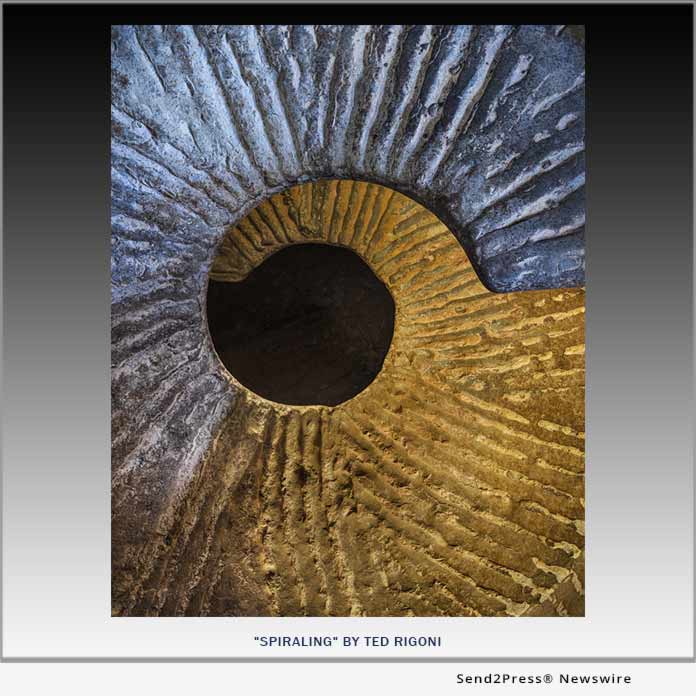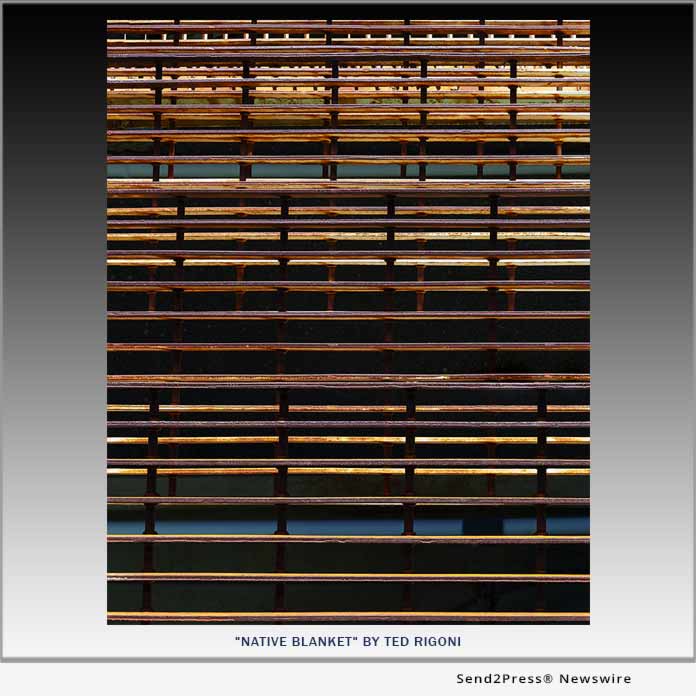POMONA, Calif., March 6, 2020 (SEND2PRESS NEWSWIRE) — The Progress Gallery, located at 300 S. Thomas St., Pomona, CA presents “Oxidized!” – a solo exhibit of art photographs of pigment on paper by artist Ted Rigoni. The Progress Gallery is open to the public from 3 to 6 p.m. Thursday – Saturday and is celebrating this work with an Artist’s Reception during the Artist Walk, on March 14, 2020 from 6 p.m. to 9 p.m.

The oxidized metals of the Mojave Desert Landscape — rusted cans, discarded bolts, ‘gold mine’ conveyor parts, spiraling culverts, and other metallic objects — seem annihilated by the gritty red rust of time. Yet these remnants have been born again as contemporary art photographs by Rigoni through selected light, edgy textures, and micro-details, to reveal the beautiful metals that supported desert pioneers as they pursued life, love, and riches in a hostile and unforgiving environment.
Abandonment is a common theme of America’s West as places that once were, have become nonplaces, but at the same time places replete with nostalgic affections. Thus, Ted Rigoni titled his exhibit, “Oxidized!” to emphasize the rusty relationship we have with abandoned metals from our past – a distinct contrast with our shiny object culture of today. For a year plus, Ted explored the desert within the Mojave National Preserve, discovering metal artifacts that date back generations, each of them an Oxidized! (rusted) icon to the rugged miners, ranchers, railroaders, and itinerant explorers whose ghosts still linger in this land of creosote bushes, coyotes and sand.

A series of rusted bean cans cast a bronze, nostalgic glow, but no details to pinpoint a specific place or time. Grand scale photographs of small rusted bolts seem to vibrate with life on the Giclee prints and display as equals to images of gigantic metal culverts and sinusoidal railroad tracks. Ted’s art connects the small with the large, the very old to the just old— all of it through the magic of an uncommon desert light.
“During my desert wilderness explorations, I often shoot images that reach out to me before I have reached out to them,” Rigoni says. “When I return to my digital darkroom, I focus on creating images that explore the role art photography plays in our psychic understanding of the specific places that spawned these abandoned metals.”
Ted describes his work as semi-abstract, with a deep topographical connection to the details which express an emotional response to the “Oxidized!” elements.
Ted points out, “I often stack focus 50 images of the same piece to capture the minute detail with exquisite sharpness because my visual vocabulary includes the finite rust and all its pigment varieties. I want to extend the visual experience beyond documenting the abstract light, patterns, and textures, which naturally appear. I am interested in how the unconscious act of abandoning these metals is born again in our consciousness as art.”
Ted Rigoni resides with his family in Tustin, California, is a professional sports photographer, retired County Road Division Manager, and has been engaged in fine art photography for the last four years. In addition to creating art photography projects, Ted is an associate art photography instructor for National Park Photography Expeditions.
You can see more of his work at https://www.tedrigoni.com/
IMAGE LINKS FOR MEDIA
[1] https://www.Send2Press.com/300dpi/20-0306s2p-rigoni-spiraling-300dpi.jpg
Caption: “Spiraling” by Ted Rigoni.
[2] https://www.Send2Press.com/300dpi/20-0306s2p-rigoni-natblanket-300dpi.jpg
Caption: “Native Blanket” by Ted Rigoni.
News Source: Ted Rigoni